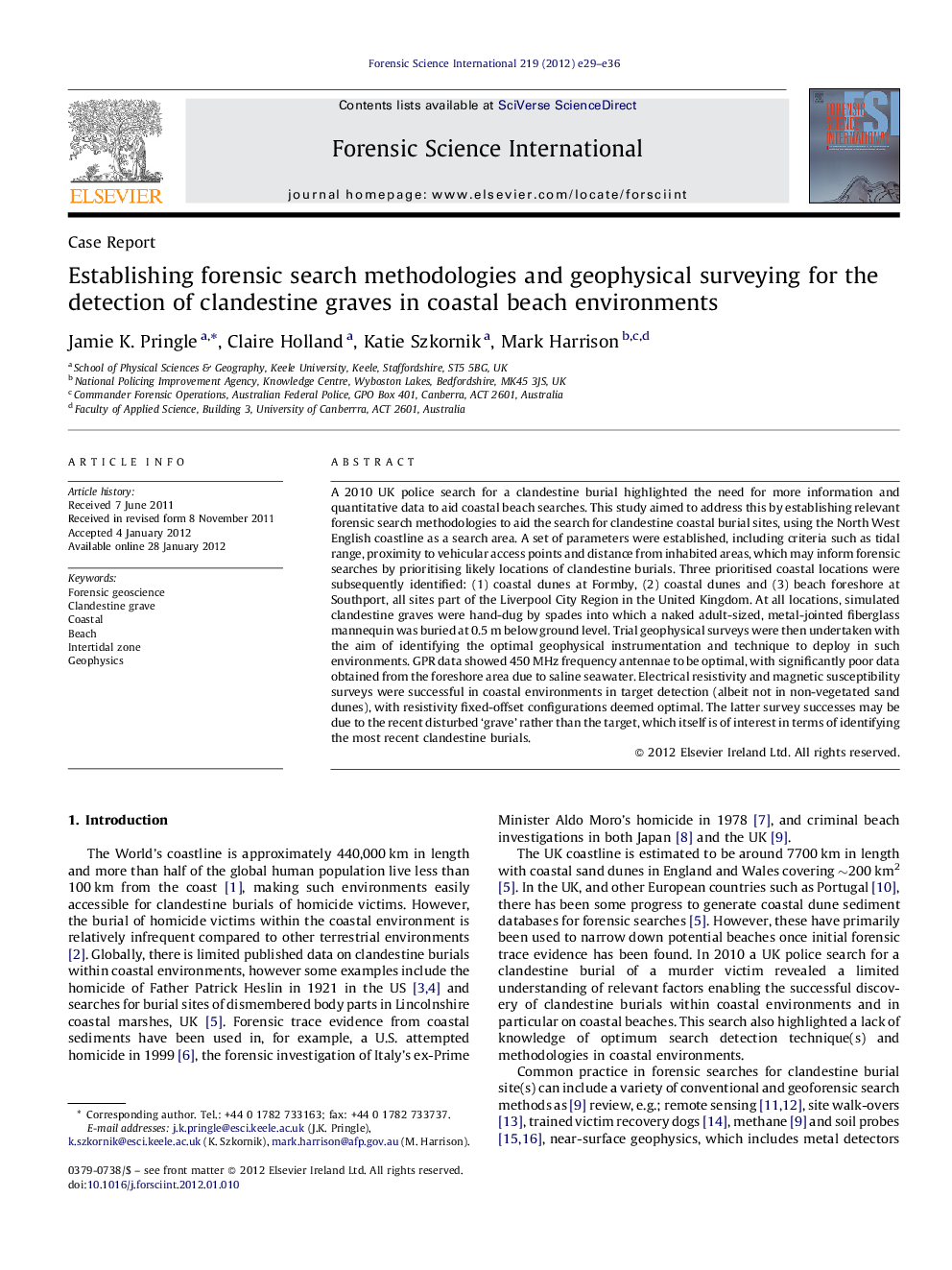| Article ID | Journal | Published Year | Pages | File Type |
|---|---|---|---|---|
| 96336 | Forensic Science International | 2012 | 8 Pages |
A 2010 UK police search for a clandestine burial highlighted the need for more information and quantitative data to aid coastal beach searches. This study aimed to address this by establishing relevant forensic search methodologies to aid the search for clandestine coastal burial sites, using the North West English coastline as a search area. A set of parameters were established, including criteria such as tidal range, proximity to vehicular access points and distance from inhabited areas, which may inform forensic searches by prioritising likely locations of clandestine burials. Three prioritised coastal locations were subsequently identified: (1) coastal dunes at Formby, (2) coastal dunes and (3) beach foreshore at Southport, all sites part of the Liverpool City Region in the United Kingdom. At all locations, simulated clandestine graves were hand-dug by spades into which a naked adult-sized, metal-jointed fiberglass mannequin was buried at 0.5 m below ground level. Trial geophysical surveys were then undertaken with the aim of identifying the optimal geophysical instrumentation and technique to deploy in such environments. GPR data showed 450 MHz frequency antennae to be optimal, with significantly poor data obtained from the foreshore area due to saline seawater. Electrical resistivity and magnetic susceptibility surveys were successful in coastal environments in target detection (albeit not in non-vegetated sand dunes), with resistivity fixed-offset configurations deemed optimal. The latter survey successes may be due to the recent disturbed ‘grave’ rather than the target, which itself is of interest in terms of identifying the most recent clandestine burials.
